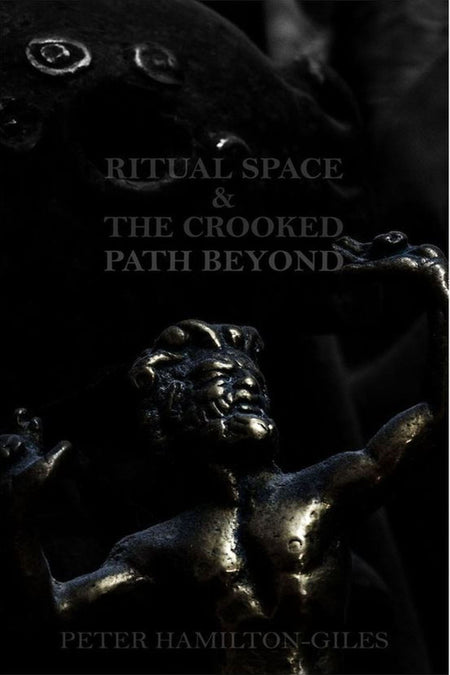You have no items in your shopping cart.

WELSH WITCHES: NARRATIVES OF WITCHCRAFT AND MAGIC FROM 16TH- AND 17TH-CENTURY WALES
Richard Suggett
Witchcraft was not perceived as a pandemic threat in Wales compared to the rest of Europe. In Richard Suggetts new book he brings to the reader for the very first time the documents relating to witchcraft, magic, and faeries according to the people who were there at the time.
This window into the past has often been obscured by the prevalent pamphlet literature, and whereas across Britain there is little that remains of the pre-trial indictments, Suggett has discovered a plethora of accounts recorded at the time in the archive of the National Library of Wales. As a consequence Welsh Witches is a vital contributor for understanding the imagination and reality of witchcraft and related practices in a way which has not for the most part been achieved before.
Authentic accounts of witchcraft accusations in sixteenth- and seventeenth-century England and Wales are rare. There is of course a sensational pamphlet literature based on witchcraft trials but this source can be problematic, especially as the trial documents have disappeared. However, a rich archive of pre-trial documents relating to witchcraft accusations has been discovered in the records of the Court of Great Sessions of Wales. These unique documents are the complaints of those who believed themselves bewitched, the depositions of witnesses, and the examinations of suspected witches.
The Court of Great Sessions had the power of life and death and sent many convicted felons to the gallows. We know exactly when the first prosecution for murder by witchcraft took place in Wales. In 1594 Gwen ferch Ellis of Denbighshire was tried for felonious witchcraft, found guilty and sentenced to be hanged. This case was something of a cause celebre. Remarkably the record survives of Gwen’s interrogation by the bishop of St Asaph as well as the depositions of her accusers.
Written evidence survives from some 20 cases and these documents are printed in full for the first time. These texts reveal remarkable details and personalities that have remained hidden in the documentary record for over 300 years. In these cases we encounter cursers and healers, practitioners of image magic and love magic, confidence tricksters and believers in fairies.
The book has a comprehensive introduction and detailed commentaries on the cases. There is a definitive list of prosecutions with abstracts of indictments. A calendar of slander cases involving accusations of witchcraft provides a glimpse of witchcraft accusations that never resulted in prosecution as well as an insight into the vocabulary of witchcraft. The study makes a vital contribution to the understanding of witchcraft beliefs in one of the ‘dark corners’ of the British Isles.
Richard Suggett is a historian, currently senior investigator at the Royal Commission on the Ancient and Historical Monuments of Wales, and Honorary Fellow of the University of Wales Centre for Advanced Welsh and Celtic Studies. He is the author of the A History of Magic and Witchcraft in Wales (2005) as well as studies on the architecture and social history of medieval and later Wales.
WELSH WITCHES: NARRATIVES OF WITCHCRAFT AND MAGIC FROM 16TH- AND 17TH-CENTURY WALES
Richard Suggett
Witchcraft was not perceived as a pandemic threat in Wales compared to the rest of Europe. In Richard Suggetts new book he brings to the reader for the very first time the documents relating to witchcraft, magic, and faeries according to the people who were there at the time.
This window into the past has often been obscured by the prevalent pamphlet literature, and whereas across Britain there is little that remains of the pre-trial indictments, Suggett has discovered a plethora of accounts recorded at the time in the archive of the National Library of Wales. As a consequence Welsh Witches is a vital contributor for understanding the imagination and reality of witchcraft and related practices in a way which has not for the most part been achieved before.
Authentic accounts of witchcraft accusations in sixteenth- and seventeenth-century England and Wales are rare. There is of course a sensational pamphlet literature based on witchcraft trials but this source can be problematic, especially as the trial documents have disappeared. However, a rich archive of pre-trial documents relating to witchcraft accusations has been discovered in the records of the Court of Great Sessions of Wales. These unique documents are the complaints of those who believed themselves bewitched, the depositions of witnesses, and the examinations of suspected witches.
The Court of Great Sessions had the power of life and death and sent many convicted felons to the gallows. We know exactly when the first prosecution for murder by witchcraft took place in Wales. In 1594 Gwen ferch Ellis of Denbighshire was tried for felonious witchcraft, found guilty and sentenced to be hanged. This case was something of a cause celebre. Remarkably the record survives of Gwen’s interrogation by the bishop of St Asaph as well as the depositions of her accusers.
Written evidence survives from some 20 cases and these documents are printed in full for the first time. These texts reveal remarkable details and personalities that have remained hidden in the documentary record for over 300 years. In these cases we encounter cursers and healers, practitioners of image magic and love magic, confidence tricksters and believers in fairies.
The book has a comprehensive introduction and detailed commentaries on the cases. There is a definitive list of prosecutions with abstracts of indictments. A calendar of slander cases involving accusations of witchcraft provides a glimpse of witchcraft accusations that never resulted in prosecution as well as an insight into the vocabulary of witchcraft. The study makes a vital contribution to the understanding of witchcraft beliefs in one of the ‘dark corners’ of the British Isles.
Richard Suggett is a historian, currently senior investigator at the Royal Commission on the Ancient and Historical Monuments of Wales, and Honorary Fellow of the University of Wales Centre for Advanced Welsh and Celtic Studies. He is the author of the A History of Magic and Witchcraft in Wales (2005) as well as studies on the architecture and social history of medieval and later Wales.






